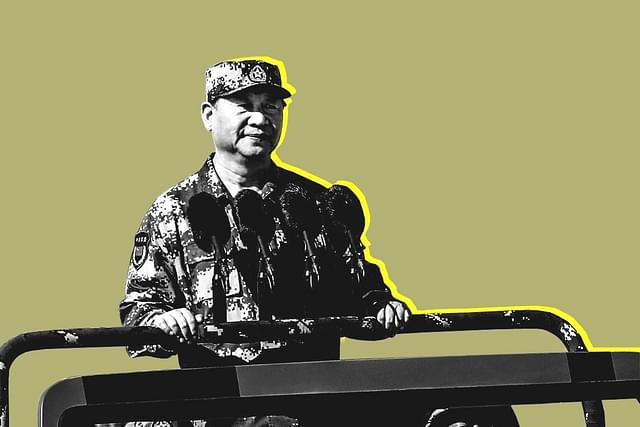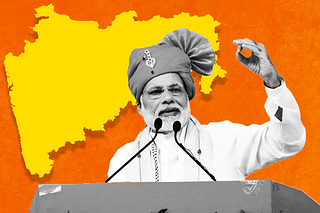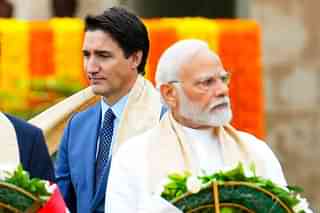World
Explained: Strategic Support Force That Chinese President Xi Is Betting On To Win Wars
Ujjwal Shrotryia
Mar 29, 2024, 12:01 PM | Updated 12:01 PM IST
Save & read from anywhere!
Bookmark stories for easy access on any device or the Swarajya app.

The Chinese military in the 2015-16 timeframe went through a series of reforms to increase its combat effectiveness and prepare for future conflicts.
This saw the restructuring of the People's Liberation Army (PLA) Second Artillery Corps (SAC) into People's Liberation Army Rocket Force (PLARF), the consolidation of seven military districts into five theatre commands, among others.
Later in 2023, a Near-Space Command armed with hypersonic weapons, high-altitude balloons and drones was also added to the mix.
To integrate all these new branches, PLARF, Near-Space, and the old ones, army, navy, air force, into one that work jointly as a cohesive unit, from planning to execution, to achieve a given task, the Strategic Support Force (SSF) was created.
The Chinese Communist Party's People’s Daily described the SSF as a force that integrates ground, navy, air, and rocket forces from beginning to end of an operation.
All previously scattered capabilities of space, cyber, electronic, and psychological warfare, in various branches will be centralised under the SSF.
SSF will utillise the recent advancements in artificial intelligence, machine learning (AI/ML), computing, cyber and space to ensure “information dominance” for decision makers, thereby victory in war.
The SSF will supply intelligence to senior PLA leaders to help them in strategic decisions and to theatre commanders to help plan and execute operations on the ground.
This is in line with Chinese President Xi Jinping’s directive to his senior commanders to transform the Chinese military into a world-class fighting force by 2047.
The SSF will comprise two departments: one, the Space Systems Department responsible for all space-related tasks, and two, the Network Systems Department, which handles information warfare related tasks, including psychological, cyber, and electronic warfare.
The space department will oversee remote sensing, earth observation, satellite navigation, and communication and will also have satellite launch centres under its command.
These centres can deploy replacement satellites if the enemy shoots down Chinese satellites.
Furthermore, the space department will ensure that the enemy is unable to use space-based sensors to its advantage, meaning this department will also launch preemptive strikes to disable enemy satellites.
This is in addition to tracking and monitoring ballistic missile launches and space debris.
The Network Systems Department, on the other hand, will handle all cyber-warfare operations, such as targeting railway, energy, highway, and health infrastructure to break the enemy’s will to fight.
The shutdown of the All India Institute of Medical Sciences (AIIMS) server in 2022 and the blackout in Mumbai in 2021 (due to malware in the power-grid infrastructure), just four months after the clash at Galwan Valley in Ladakh, was just a trailer of what the SSF is supposed to do.
Notably, both these attacks had Chinese hands in it.
In addition to cyber warfare, the Network Systems Department will also conduct electronic warfare, electromagnetic and signal intelligence (SIGNIT) aimed at disrupting the enemy’s command and control systems, attacking its computer networks, jamming communications and satellite navigation, akin to GPS-jamming that the Russians are using against the Ukrainians.
The Chinese aim to demoralise the enemy by targeting its space assets and civilian infrastructure (power grid, transmission lines, telecommunication networks, railway signaling, and medical networks) while simultaneously crippling the command and control (C2) and communication capability of the military, thereby paralysing the decision-making capacity of the adversary.
All this, while ensuring that Chinese decision-makers are not denied the same.
The remaining arms, i.e., the rocket force, army, navy, and air force, will use the confusion created by cyber, electronic, and psychological operations to deal a final debilitating blow to the adversary.
But How Does This Integration Work?
In theory, such planning sounds promising, but as the saying goes, “no plan survives first contact with the enemy.”
How exactly will the integration happen? This is where AI comes in.
The SSF will collate data coming from all sensors, whether space, land, sea, or air-based, and analyse it in real-time using AI algorithms. This vast amount of continuously changing data is beyond human capacity to interpret.
The SSF has placed significant importance on developing AI-related intellectual property (IP) and algorithms that collate and make sense of that data in real-time, and suggest future courses of action to ground commanders and senior officials.
This can shorten the Observe-Orient-Decide-Attack (OODA) loop, minimising the time from detecting a target, deciding whether to engage it or not, and then taking or not taking action.
That’s what Xi Jinping is counting on to win wars against its immediate adversaries, read Taiwan, India, and the US. How quickly the SSF will achieve this “information dominance” remains to be seen.
Also Read: Is The Chinese Rocket Force A Paper Tiger?
Save & read from anywhere!
Bookmark stories for easy access on any device or the Swarajya app.
Editorial Associate at Swarajya. Writes on Indian Military and Defence.
Introducing ElectionsHQ + 50 Ground Reports Project
The 2024 elections might seem easy to guess, but there are some important questions that shouldn't be missed.
Do freebies still sway voters? Do people prioritise infrastructure when voting? How will Punjab vote?
The answers to these questions provide great insights into where we, as a country, are headed in the years to come.
Swarajya is starting a project with an aim to do 50 solid ground stories and a smart commentary service on WhatsApp, a one-of-a-kind. We'd love your support during this election season.
Click below to contribute.





